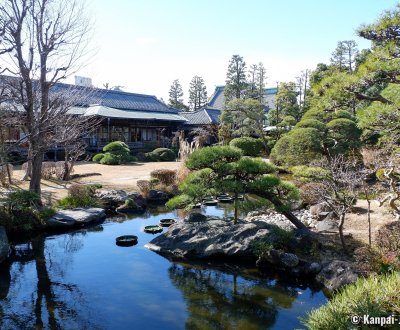Shibamata
Tora-san’s Traditional Neighborhood in the East of Tokyo
Shibamata is the historical and touristic neighborhood of Katsushika, a ward located at the north-eastern side of Tokyo in Japan. As soon as exiting the station, visitors get immersed in an old-fashioned atmosphere and follow a shopping street lined with quaint stores to Taishakuten temple in a leisurely stroll along the Edogawa River.
Shibamata is the main sightseeing attraction of Katsushika ward in Tokyo, offering a pleasant half a day walking course including traditional heritage and seichi junrei pilgrimage.
Most Japaneses know the area as it is the background of the famous movies series by Yoji Yamada, Otoko wa tsurai yo ("It's Tough Being a Man"). Its main character Tora-san is indeed from Shibamata and the neighborhood’s streets appear in each of his many adventures; 50 films have been released between 1969 and 2019.
The place, along with other nearby sites to discover, displays many tributes to the series, starting by the statues of Tora-san and his sister standing in front of Shibamata station. Fans and visitors interested in this side of the Japanese popular culture can also visit the Tora-san Museum for a quick but immersive glimpse into the movies’ universe, that are mainly set in the second half of the 20th century.
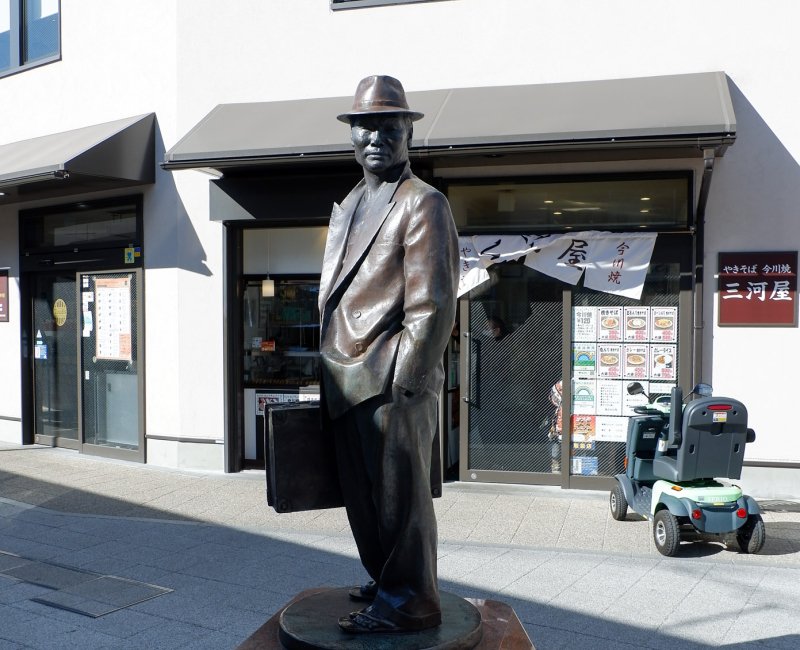
Shopping alley and Taishakuten temple
Start the exploration of the neighborhood from Shibamata station and Taishakuten Sando, a shopping alley highlighted by an archway-like gate decorated with red lanterns 🏮: welcome to a retro Tokyo filled with traditional crafts and old times’ delicacies. In the north-east off to the center of the capital, and unlike the tourist traps of the Nakamise-dori avenue in front of Senso-ji in Asakusa, Shibamata offers plenty of local shops, where craftsmen still labor in their workshops at the back of the stores.
Taishakuten shopping alley is about 500 meters long and a good place to have lunch in the area. Restaurants serve every day Japanese dishes, for example soba noodles, tempura fritters, or unagi grilled eel. Many shops also sell classic sweets, such as the traditional dagashi candies and especially kusa-dango 🍡 (mugwort dumplings) skewers, Tora-san’s favorite confectionery made with dark green mochi glutinous rice balls sided with anko sweet red bean paste.
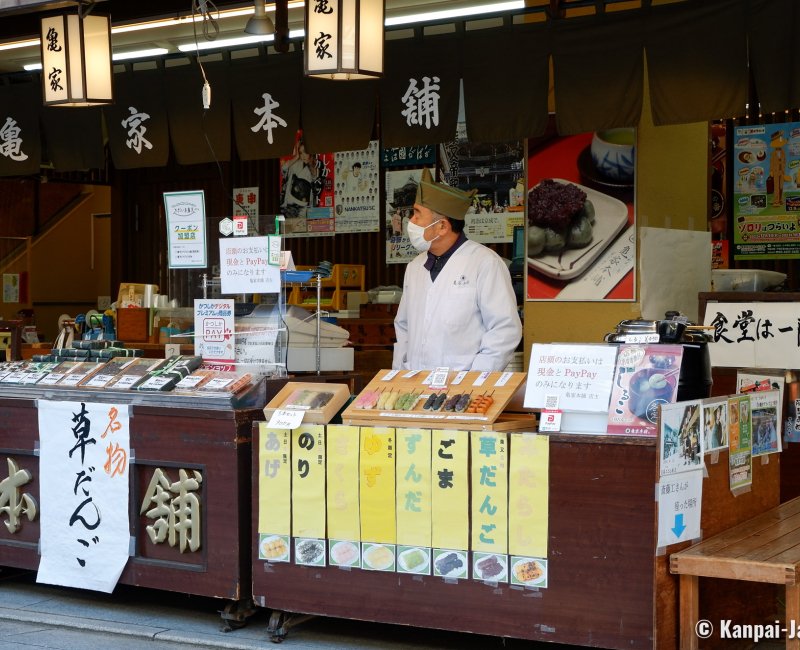
The souvenir shops are filled with items related to Buddha, reminding that the shopping street connects to Taishakuten temple, renowned for its facades ornamented with very detailed wood carving. The imposing Niten-mon gate marks the temple’s entrance and its main building is surrounded by Ryo-no-matsu a majestic sacred pine tree shaped in a floating dragon. Behind the chozuya ablution fountain, a cave is home to small white snakes’ statues, that are offerings to the goddess Benzaiten so she can grant worshipers good fortune.
The interior of the temple can be visited for a fee, and one must take shoes off. Behind glass protections, a gallery exhibits carved wood panels illustrating the Lotus Sutra. Then, the covered passageways circle around the temple’s garden named Suikei-en. There, you can take a moment to sit and watch the seasonal blooming of the vegetation around the pond.
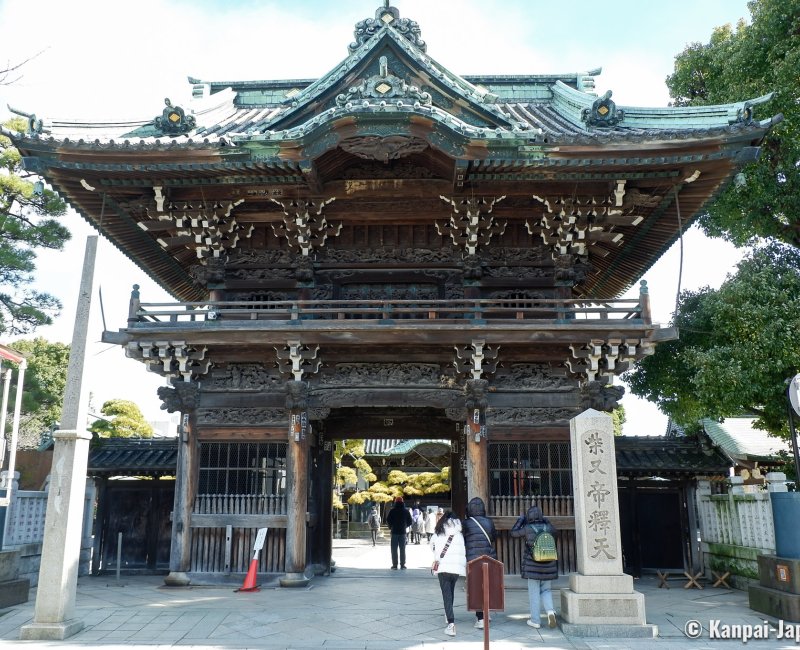
Yamamoto-tei teahouse
At the back of the temple stands the lovely Yamamoto-tei teahouse, which is the former private residence of Einosuke Yamamoto, a successful Japanese industrial of the Taisho (1912 - 1926) and Showa (1926 – 1989) eras. The traditional Japanese architectural style of this 1-story building, with hints of Western influences, perfectly blends with its garden that can be admired from the veranda arranged in a tea room.
If you decide to pay the fee to visit the house, we recommend staying longer for a pleasant matcha break, and enjoy the indoor decoration, both elegant and simple, and the panoramic view on the inner garden.
The outer garden is less refined, but directly connects to the banks of the Edo-gawa River where one of Tokyo’s greatest fireworks 🎆 is held in August. There is also a wood pontoon, Yagiri-no-watashi, for the boat ferrying the river that Tora-san used many times in the movies to reach the Yagiri district located on the bank opposite to Shibamata. The neighborhood’s walk ends nearby at the Tora-san Museum and its small adjoining café.
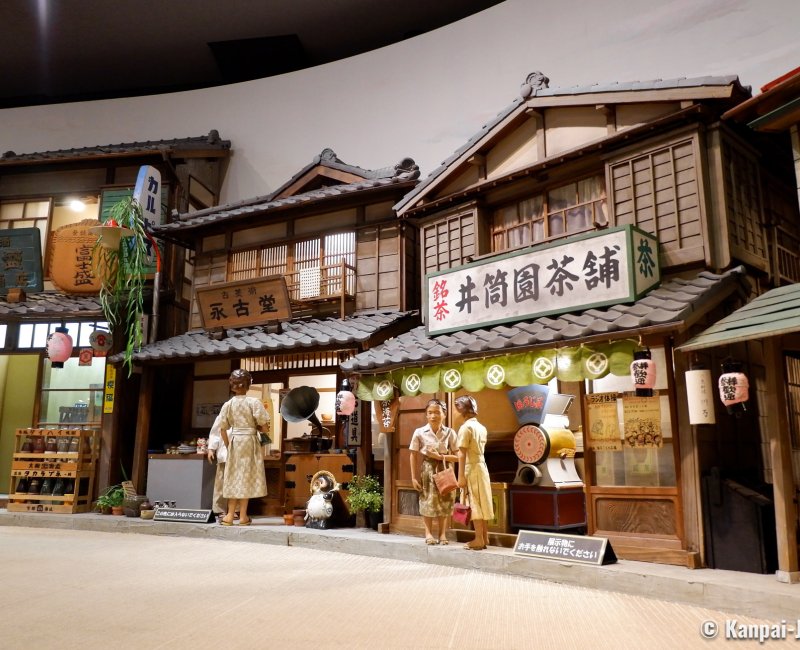
Shibamata is located relatively far from the center of the capital but is easily accessible by train 🚅 from the lovely Yanaka (Nippori station) and Asakusa (Oshiage station) areas thanks to the Keisei Line, for an excursion day showing a more historical and human-sized side of Tokyo.

